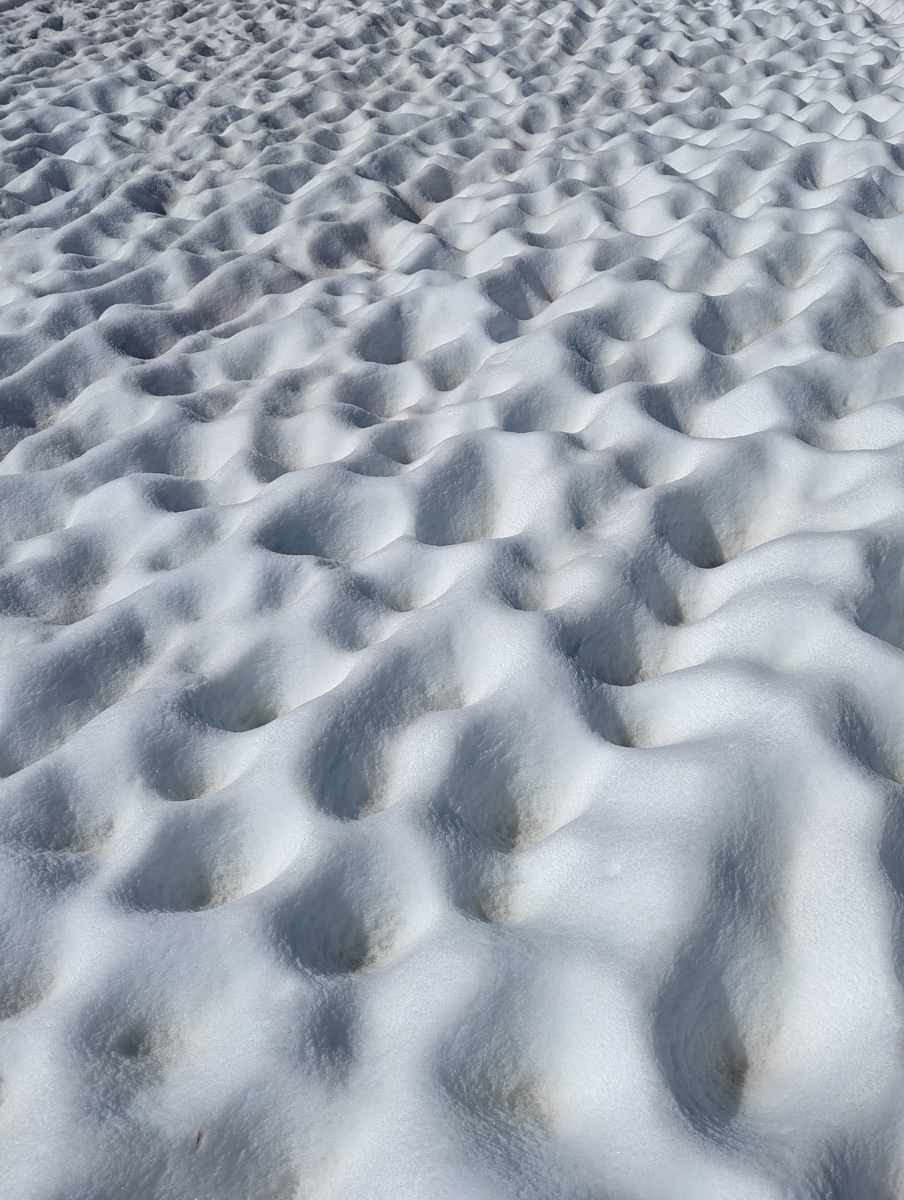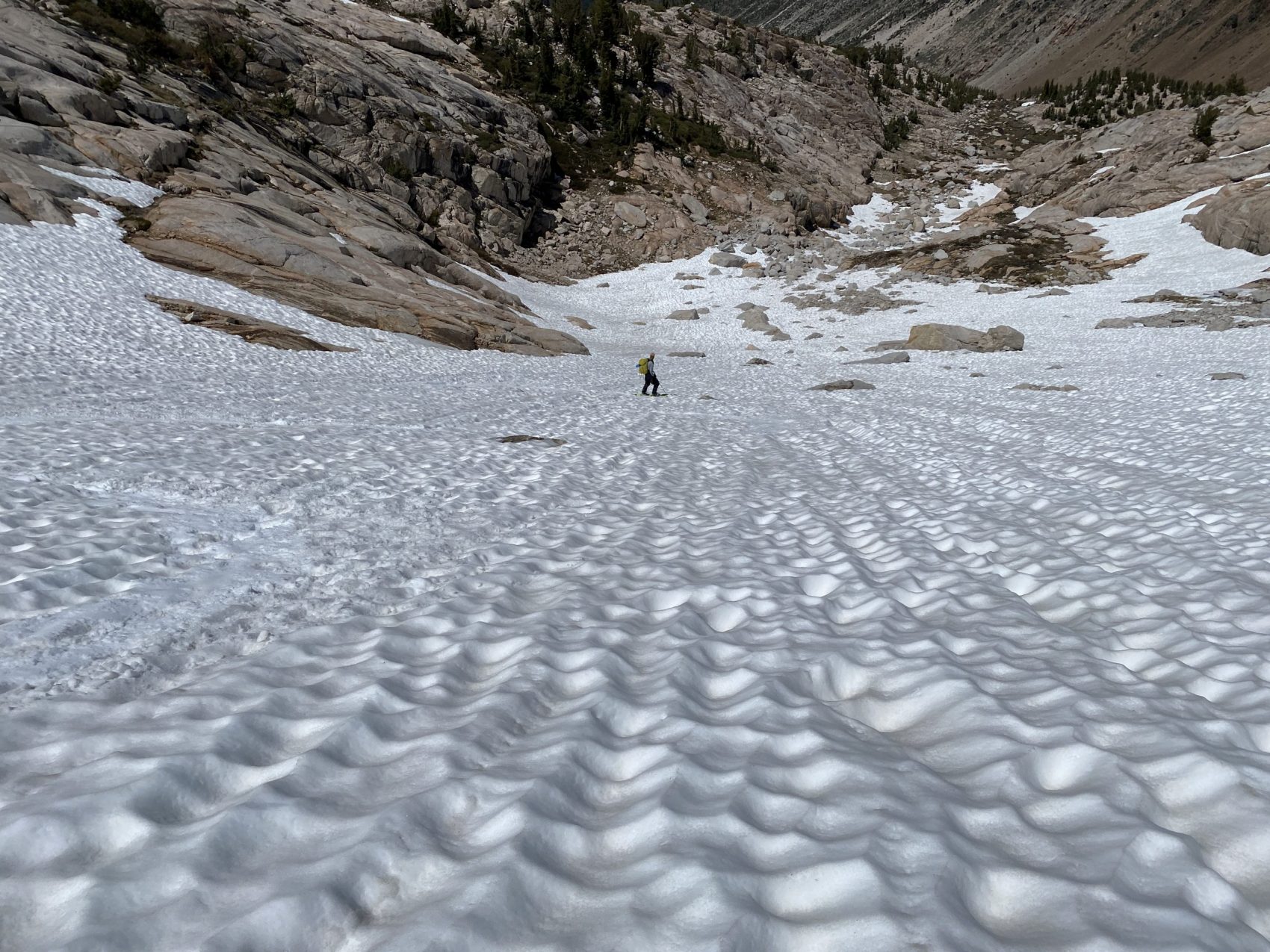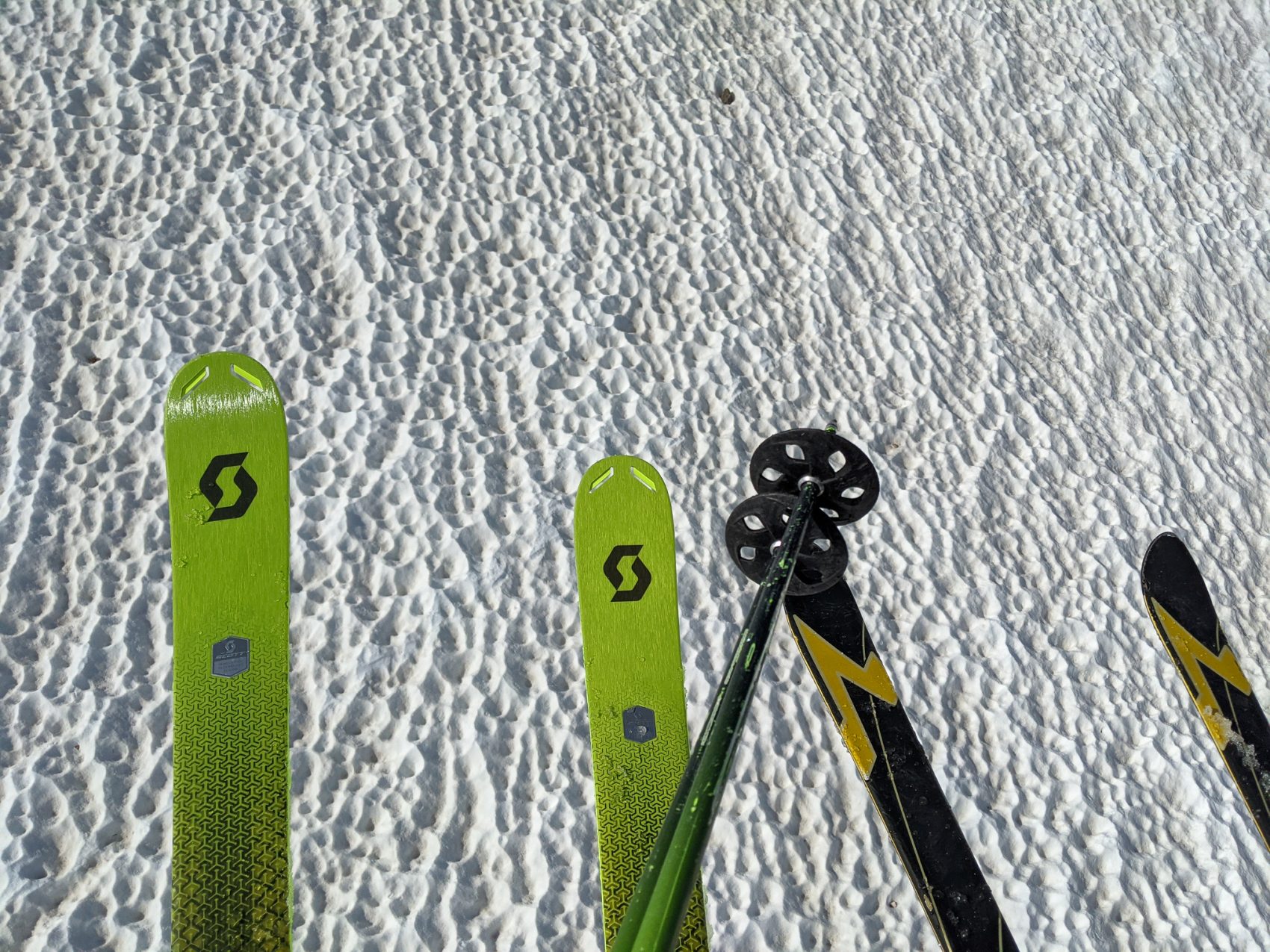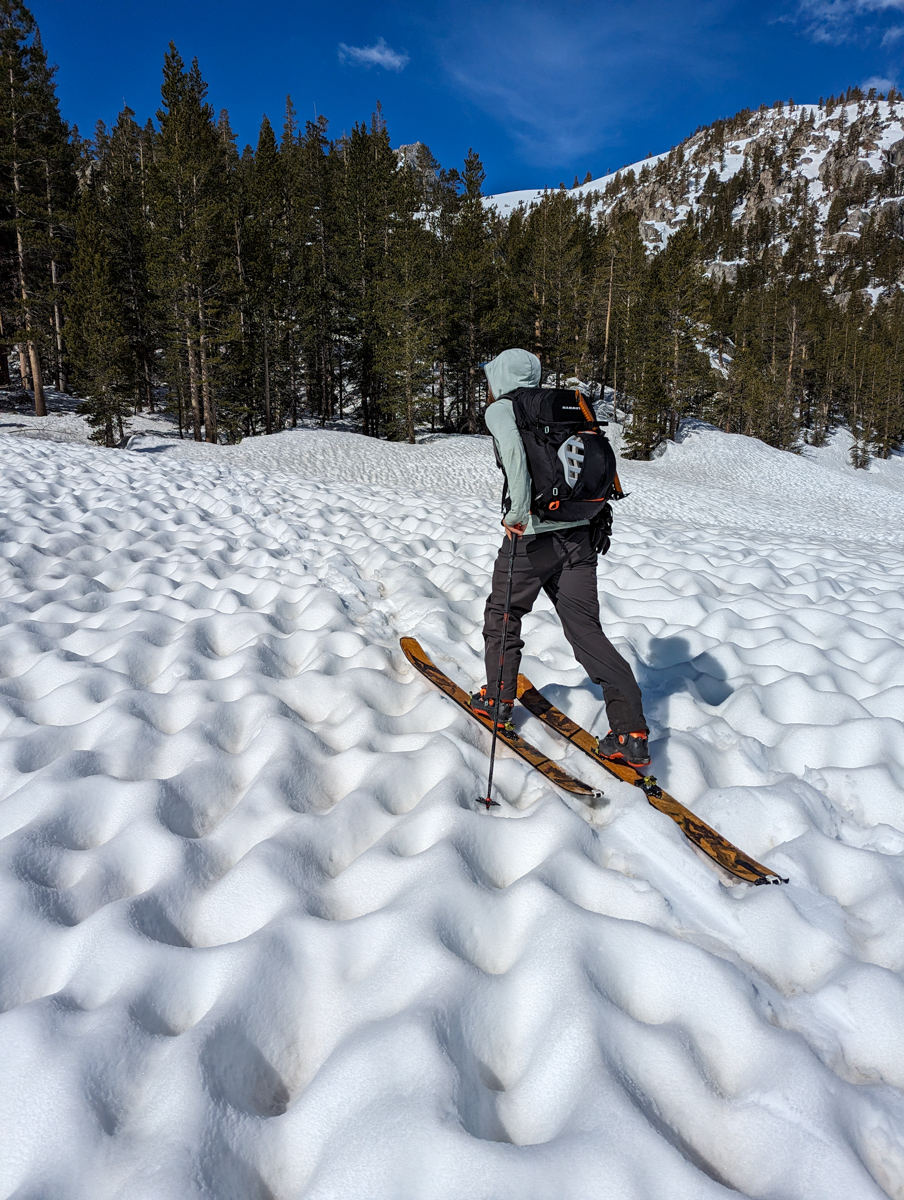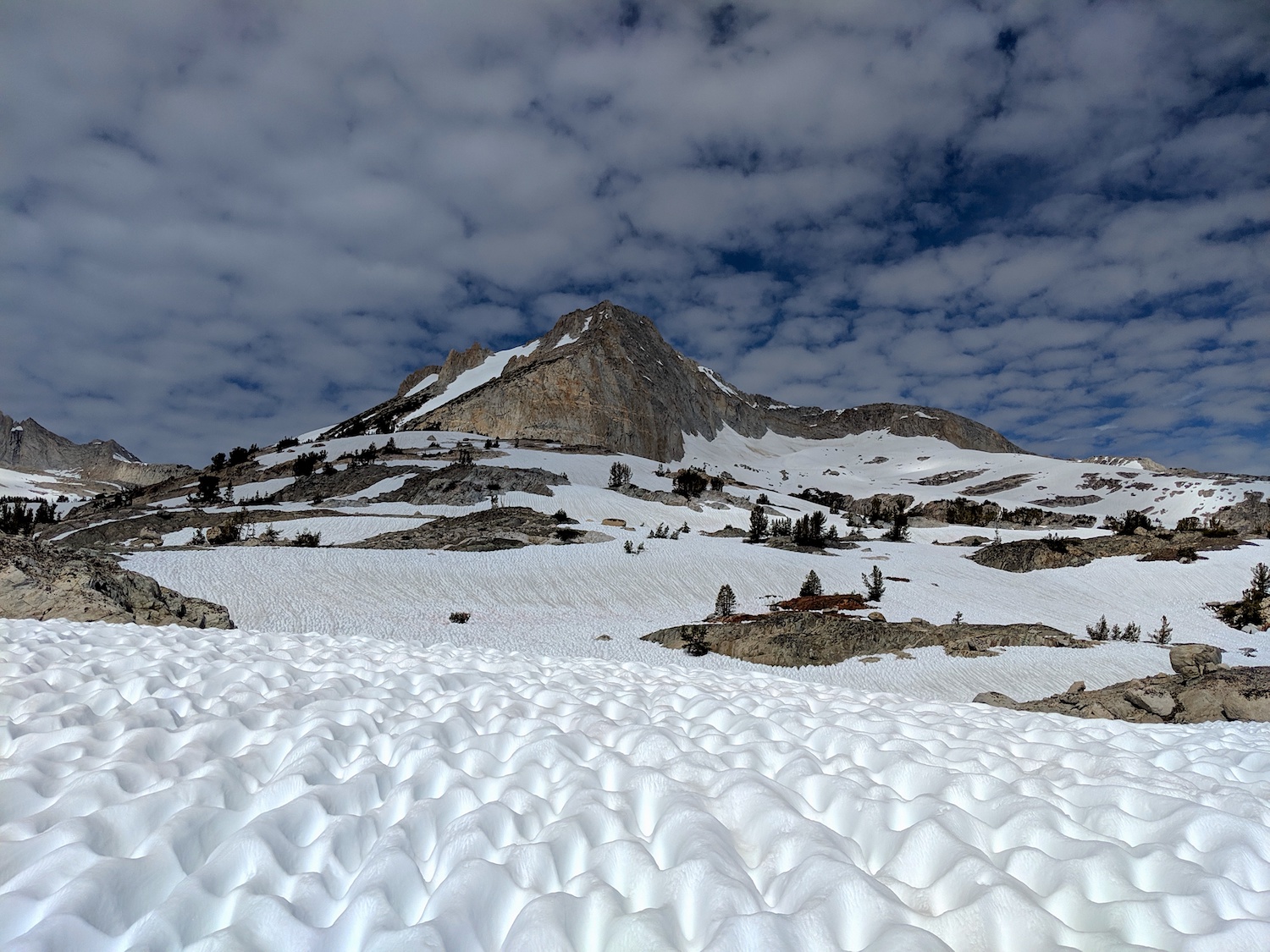
Perhaps you’ve trudged through them—the several-inch-deep snow pockets that litter approaches during the late spring touring months. Complete with miniature peaks and valleys like the mountains they reside on, the cups can range anywhere from a few inches to over two feet in depth. But what are suncups, how do they form, and where are they found?
If you haven’t seen them first hand, suncups are “bowl-shaped, open depressions into a snow surface, normally wider than deep,” Wikipedia tells us. They form in a honeycomb-like structure, where the edges between the pockets connect with adjacent cups over a wide, usually flat area. As the name suggests, there is an element of heat required for their formation—hence suncups—and they appear most commonly at the end of the season during periods of melting and refreezing.
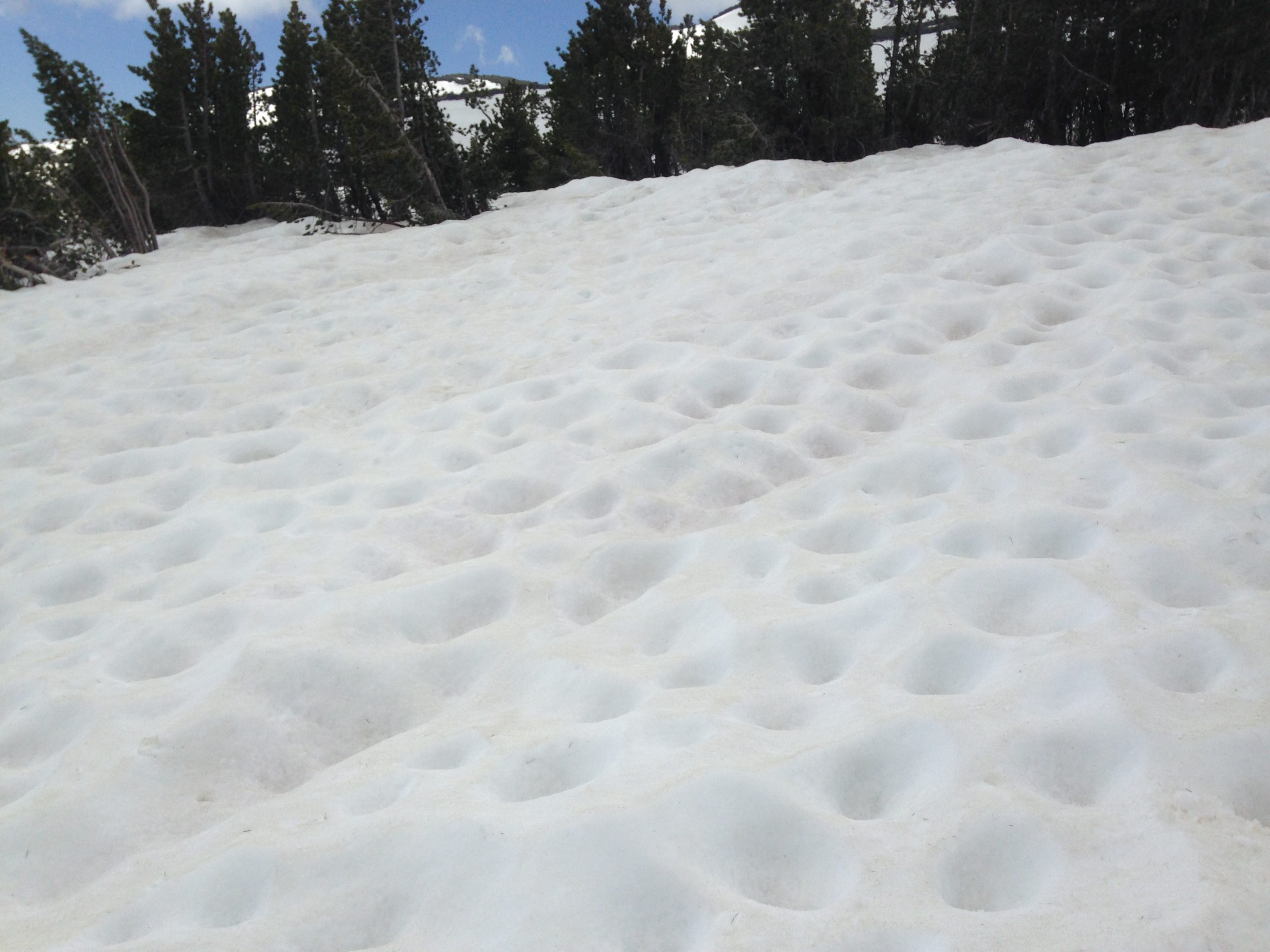
For a suncup to form, some areas of the snow must melt faster than others. Conditions that bring this result are sunny days with warm, dry air that favors evaporation and some wind that brings a cooling pattern to the highest parts of the snowpack.
In practice, the sun heats the snowpack at a faster melting rate than usual, and any meltwater falls from the peaks into trough sections. From there, the melted water has a higher temperature than the snow beneath it, softening the surrounding area as it absorbs energy from the sun. Simultaneously, gentle breezes cool the growing peaks, so the parts that withstood the first melting round get a bonus freeze and remain tall.
This process will repeat as long as there is thawing and refreezing; the sun cups will grow in volume (both depth and width), joining with neighboring cups as the melting ensues, until conditions remain steady above the freezing point, the peaks inevitably melt, and the snowpack becomes dirt.
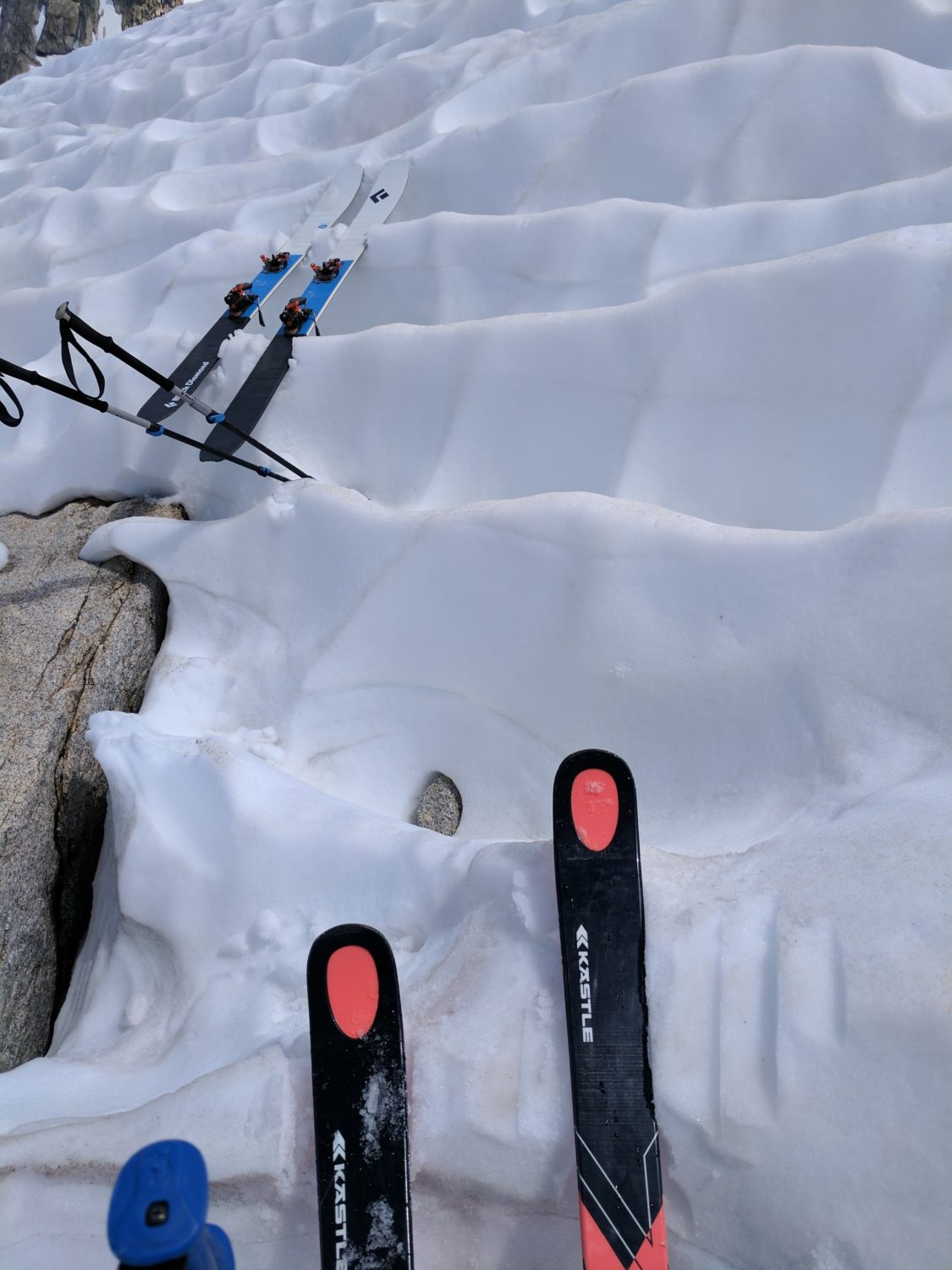
The last part of suncup formation is the location; these cups are typically found on slopes with aspects less than 30º and form best on large, flat surfaces, which tend to be backcountry approaches. For the cups to develop their signature pockets, the meltwater has to pool in a confined area and remain sandwiched between the surrounding peaks. As the aspect increases, the meltwater can more easily stream downhill, and the cupping phenomenon decreases until the aspect is so steep it pulls the water off the mountain without creating the suncup peaks.
Geographically, suncups form in high-elevation areas with deep snowpacks that last into the warmer months through intervals of thawing and refreezing. Mountain ranges such as the Sierra Nevada, Cascades, and Wasatch are known for them, but they can also appear in sections of Appalachia as well as across the northern US, provided that conditions align.
It is also worth noting that conditions that form suncups are prone to producing wet slides, so it is always wise to be aware of the avalanche conditions and come prepared into the backcountry. As a general rule, your boots should sink into the snowpack to about the ankle for ideal corn farming, and if you sink beyond the power strap of your boot, you could be in dangerous conditions.
